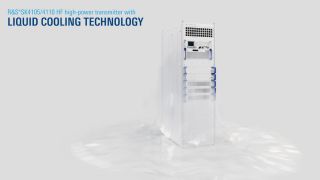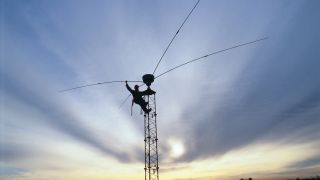The cooling system of the future
The Rohde & Schwarz high frequency (HF) high-power transmitters have increased performance and required an innovative new cooling system to cope with the extra waste heat
The new R&S®SK4105 and R&S®SK4110 HF high-power transmitters for beyond line of sight (BLOS) communications from shore stations are the first transmitters in the 5-10 kW power range that use liquid-cooling instead of air cooling. Decades of experience and expertise in the broadcast and media markets have given Rohde & Schwarz an opportunity to use this innovation to open a new market.
Liquid cooling offers incredible performance and, in these systems, the liquid transfers warmth from the components for better heat management than with air cooling. Liquid cooling works much like a radiator in a car or home. In these systems, the liquid circulates through aluminum blocks for the stressed components that need cooling. The relatively cool fluid circulating through the block dissipates heat from the components and cools them. The heated fluid is pumped to the radiator, where fans discharge the heat into the cool air. The re-cooled fluid returns to the aluminum block to remove heat and the cycle repeats.
This results in more efficient cooling while protecting adjacent parts by preventing strain from waste heat. Less wear means less maintenance for components, giving transmitters a longer service life in general. The hoses, heat exchangers and pump units can be set up and put into service quickly and economically. Heat exchangers are usually installed outside buildings, with the pump unit placed near the transmitter. The heat exchangers can be used in any environment, such as coastal areas with corrosive sea air or in cool regions with snow and ice.

















